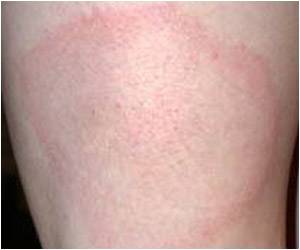Lyme disease is transmitted through the bites of infected deer ticks, which can be about the size of a poppy seed and is common in suburban counties.

There are now 260 counties where the number of Lyme disease cases is at least twice what's expected, given the size of each county's population.
Lyme disease is most common in wooded suburban and far suburban counties. Scientists aren't sure why high-risk areas are expanding, but it likely has something to do with development and other changes that cause the deer and ticks that carry the bacteria to move, said Kugeler.
Symptoms include a fever, headache and fatigue and sometimes a telltale rash that looks like a bull's-eye on the tick bite. Most people recover with antibiotics. If left untreated, the infection can cause arthritis and more severe problems.
Overall, 17 states have high-risk counties. The entire state of Connecticut, where the illness was first identified in 1975, has been high-risk for decades. Now, high-risk zones encompass nearly all of Massachusetts and New Hampshire and more than half of Maine and Vermont.
Other states that saw expansion of high-risk areas include Virginia, Pennsylvania and New York along the Eastern seaboard, and Iowa, Michigan and Minnesota in the Midwest.
Advertisement
About 20,000 to 30,000 U.S. cases are reported each year, but experts say there actually are as many as 10 times more.
Advertisement








